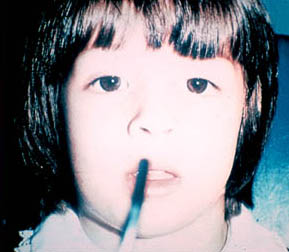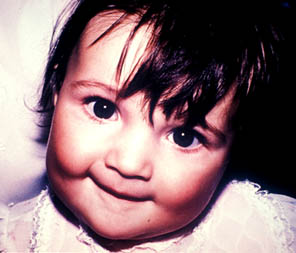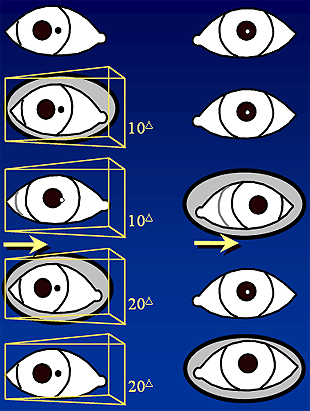John Grigg
Senior Lecturer
Department of Ophthalmology, University of Sydney
[email protected]
- What is the Function?
- Function
- to maintain the object of interest on the fovea
- What are the components?
- Extra-ocular muscles
- cranial nerves III, IV, VI
- brainstem nuclei
- brainstem gaze centres (horizontal and vertical)
- cortical movement centres
- vestibulo-ocular system
- sensory input (visual pathways)
- Motor fusion
- align eyes to allow sensory fusion - Sensory fusion
- unification of visual excitations from corresponding retinal images into a single visual image

Hold pen top about 15cm in front of face then line up pen top with x in red bar with right eye and then x in green circle with left eye. Then fix on pen top and all 3 objects will line up.
- When the two visual axes are not directed towards the object of attention
- Version
- movement of both eyes in the one direction - Vergence
- movement of the two eyes not in a parallel manner - Fusion
- image formed on each retina is perceived as one image
- Heterophoria
- Latent strabismus, tendency for the eyes to turn away from the fusing position
- esophoria (EP), exophoria (XP) - Heterotropia
- Manifest strabismus, one eye is not directed towards the object of attention
- esotropia (ET), exotropia (XT)
- bifoveal fusion
- fusional vergences
- nature and degree of deviations
- Measurements
- if tropia
- characteristics of suppression scotoma
- cycloplegic retinoscopy
- refractive error corrected
- accommodative target distant and near
|
Near Fixation
|
|
|
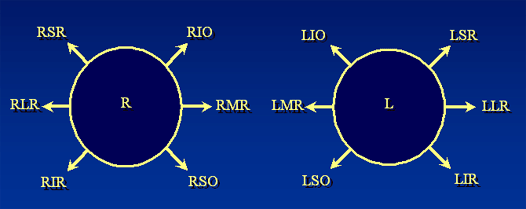
- A cover is held over the right eye for several seconds so that the right eye can assume its normal position of rest independent of binocular influences
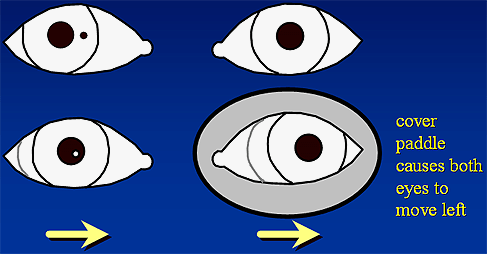
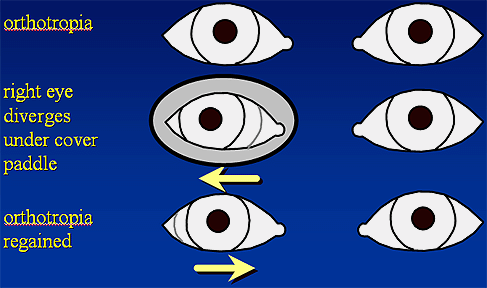

|
|
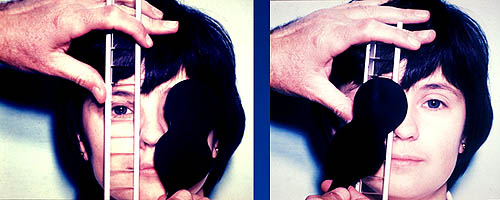
|
|
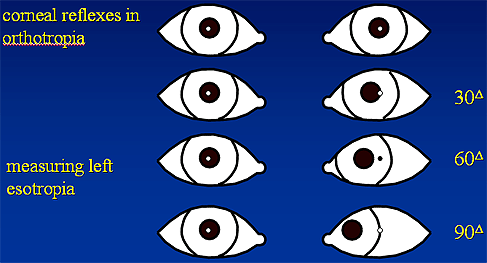
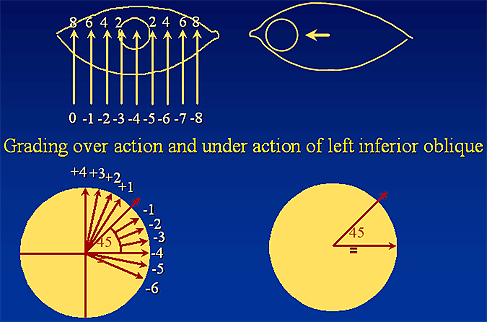
- Inestimable importance in squint
- Valid Inferences
- age of onset
- type of squint
- refraction correction
- motor examination
- Aetiology
- Congenital
- Paralytic
- Secondary
- unilateral visual disturbance
• eg cataract, retinoblastoma
- ocular muscle or orbital tissue disorders
• eg trauma, thyroid eye disease
- Accommodative
- Consecutive
- Aim of treatment
- good vision in each eye
- no cosmetic defect
- test quality of vision
- refraction and examine fundus use cycloplegia
- early onset tropia
- binocular suppression scotoma - early onset exotropia
- temporal hemiretinal suppression scotoma - early onset esotropia
- regional nasal hemiretinal suppression
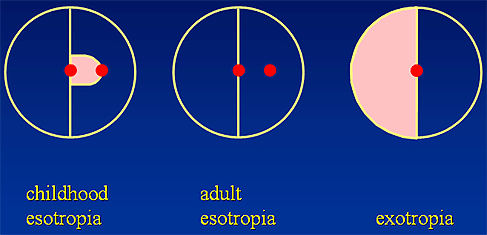
|
|
- Development of normal vision in each eye depends on each eye experiencing sharply focused images
- During the critical period of early life this is genetically programmed
- Is in early childhood
- most sensitive 3 months to 3 1/2 years
- less sensitive 3 1/2 years to 10 years
- Plasticity in developing geniculocortical connections "Critical Period " - Blakemore
- in developing anatomical structure, visual path present in utero wave of maturation sweeps from eye to visual cortex correct formation of connections depends on
- precisely timed interactions between axons and their targets
- competition between axons
- cell death
- axon withdrawal
- trophic interactions
- other mechanisms
- lay down basic "maps" of visual field before birth
- synaptic plasticity continues after birth on basis of information from visual environment permitting cortical neurones to refine their processing capacities (synapses)
- plasticity dependent on input from noradrenergic neurones and subject to pharmacological manipulation
- sensitivity to deprivation
- maximum 6 - 9 months
- continuing to 8 years
- critical period
• 4 months to 3 1/2 years and to 8 - 10 years
| Unilateral | Bilateral |
| manifest strabismus | nystagmus |
| anisometropia | uncorrected hypermetropia |
| visual deprivation | visual deprivation |
